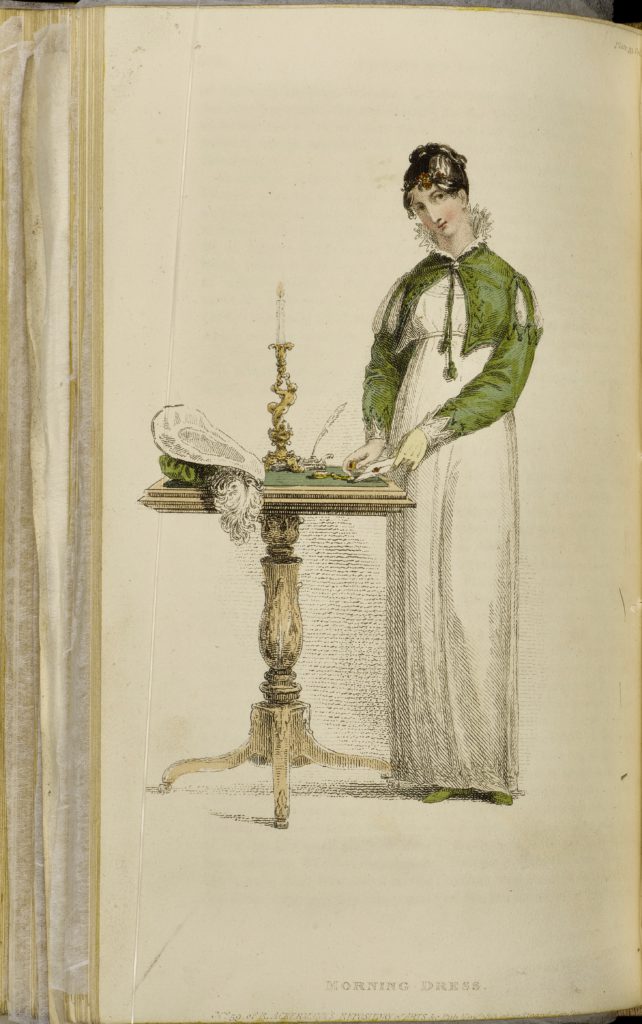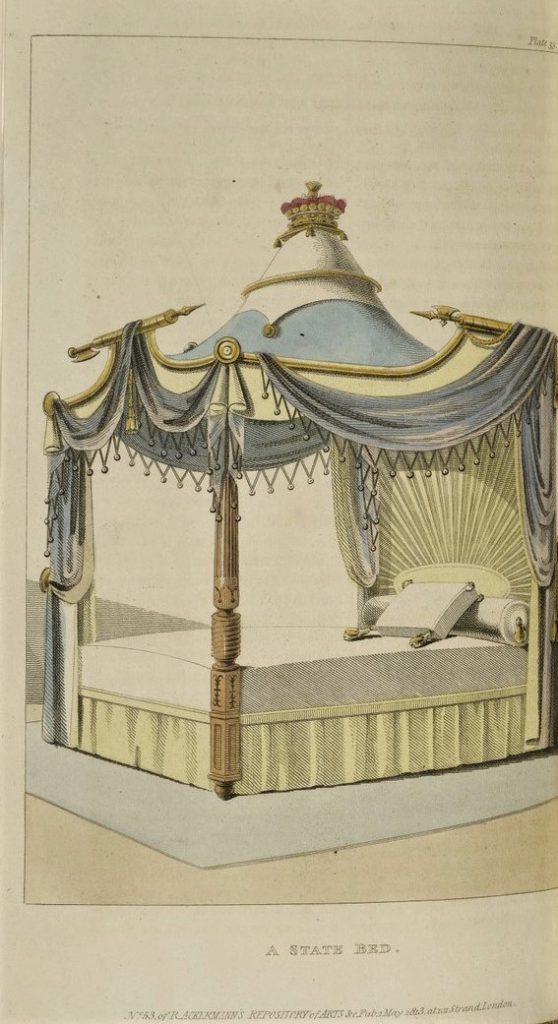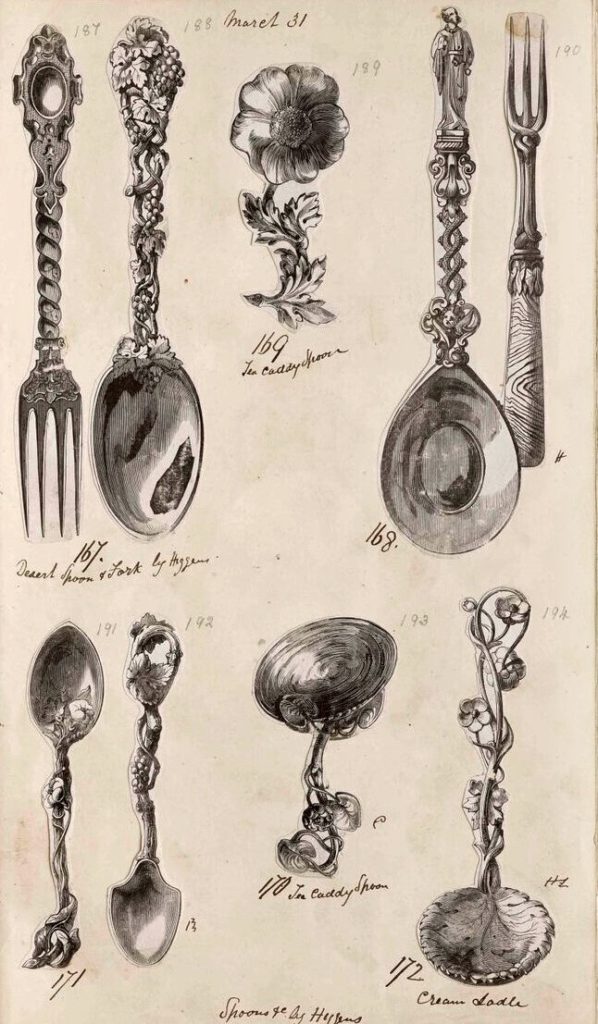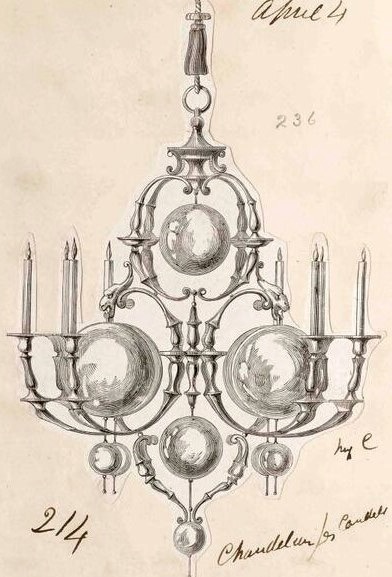Exhibition Intro ~ Map ~ Next section
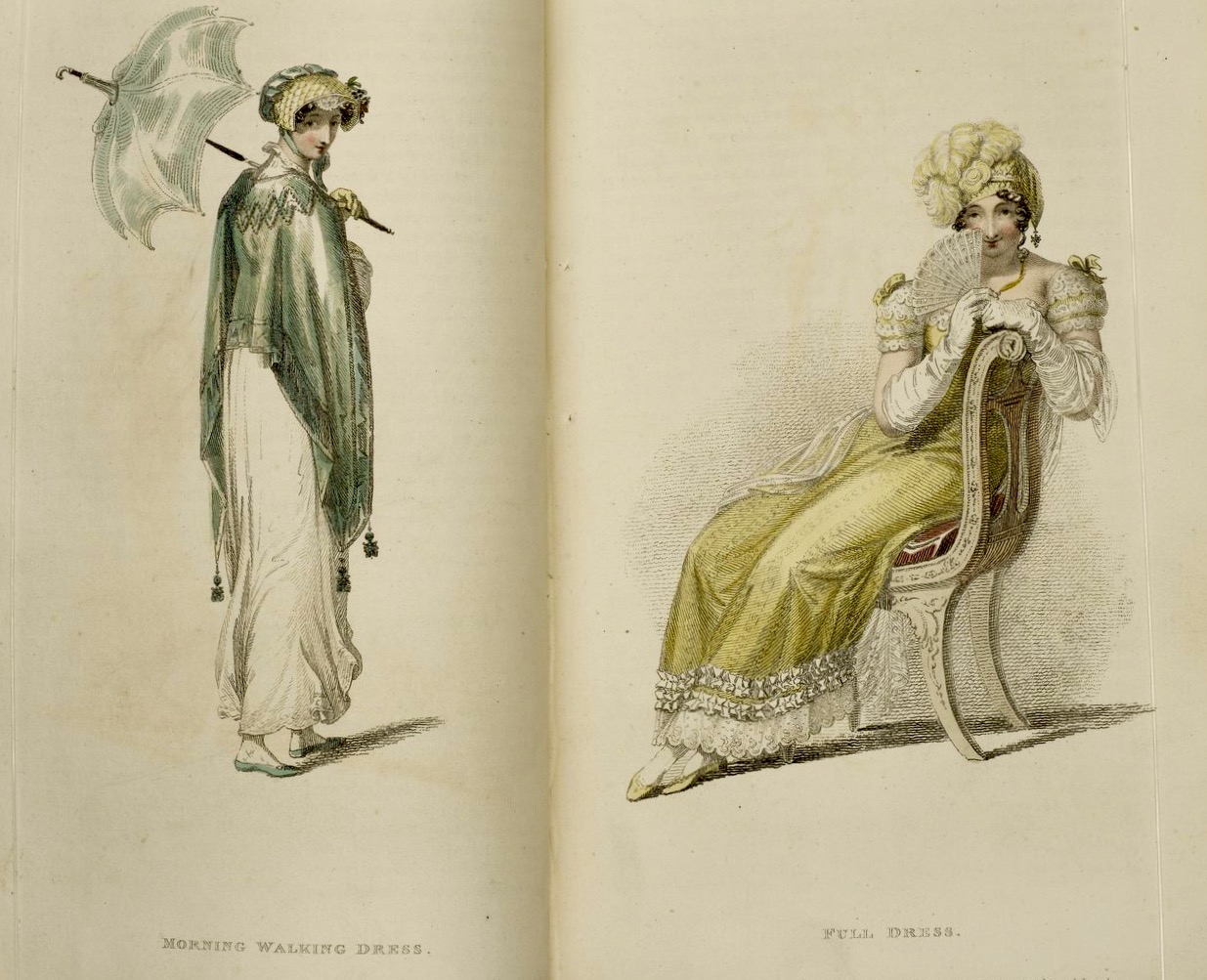
Ackermann’s Magazine
“These pictures are almost like adverts, showing women off as a product rather than a living, breathing being […] women are shown in stereotypical light… elegant and pale [..] shaped by men and society to be like an easily manipulated object.”
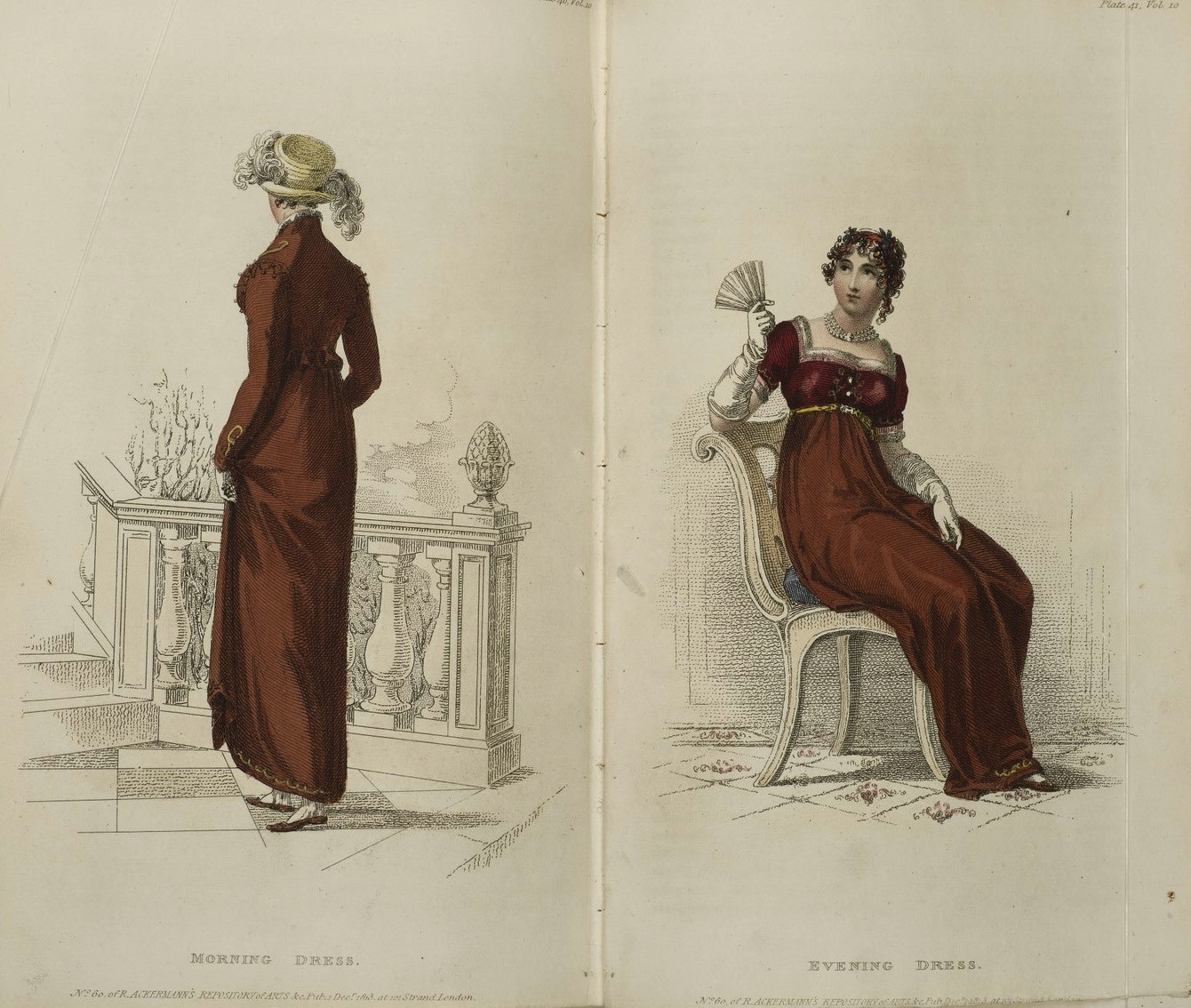
The above analysis of fashion plates from Ackermann’s Repository by a student from BACA shows one young critic using their sophisticated awareness of today’s image-obsessed culture to reflect on nineteenth-century fashion engravings. Rudolph Ackermann’s print shops on London’s Strand were central to fashionable Regency life. From 1809 to 1829, he published his magazine Repository of the Arts which combined fashion, luxury goods with historical, cultural and scientific subject matter. In the etched illustrations, often hand coloured with great care and subtlety, female figures are presented in the same style as luxury items. As the student’s critique explores, the balcony in the images above “cements the gentle and obedient aspects” of femininity – literally fencing the figure in.
The prints in this section date from the 1813 issue of Ackermann’s Repository.
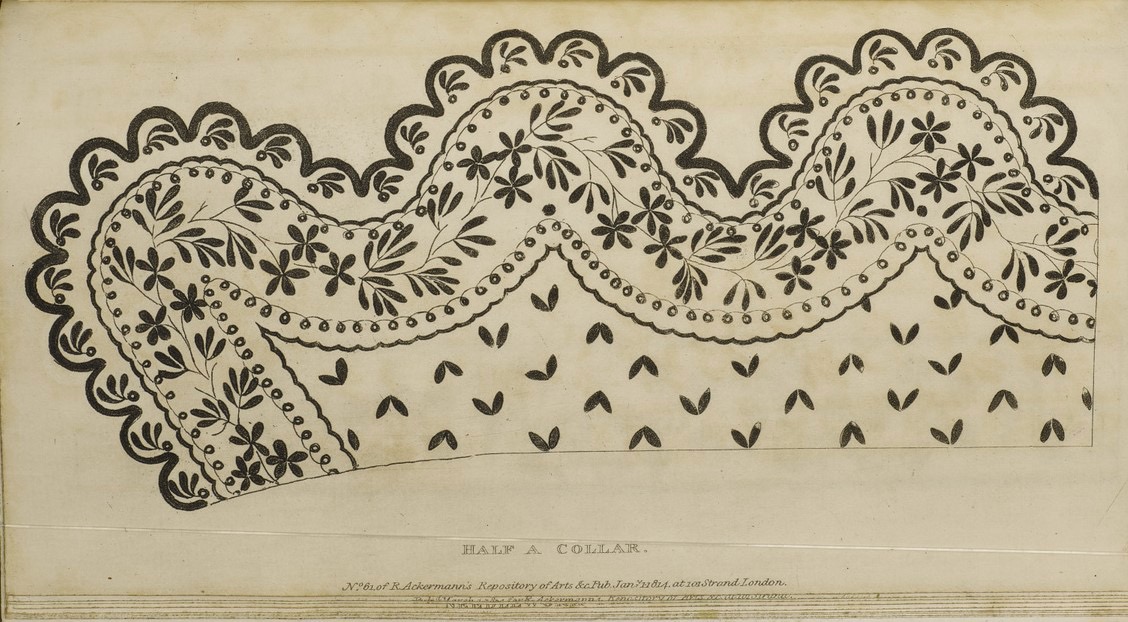
Feminity and commodities
The Dalziel Archive shows that the appetite for images of fashions and material objects endured as the nineteenth century progressed. The highly decorative designs for cutlery and light fittings (seen below) were recorded in wood engraving for The Great Exhibition of 1851.
In Ackermann’s Repository costume and consumer items are carefully curated to suggest an idealised refined lifestyle. By contrast, images of elaborately dressed women in the Dalziel Brothers’ Archive, which comprehensively records the varied wood engraved prints they produced, are often removed from their original context. Here, the lines between the fashion plate, advertisement and the book illustration can become blurred, take for example, this illustration of 1871 engraved by Dalziel after L. Sambourne for the journal ‘London Society’:
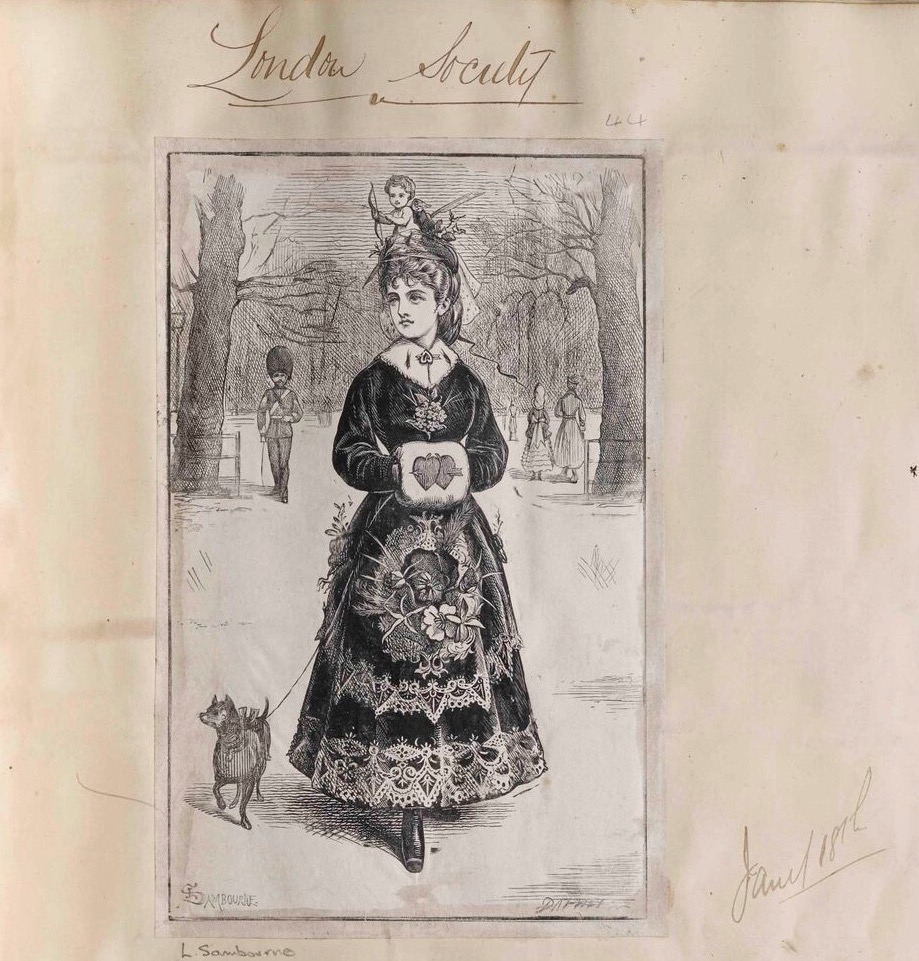
Several students took such images as inspiration for creative writing, using them as a starting point to think about gender roles. In doing so, they captured some of the language and conventions of Victorian literature.
One student chose to use the restrictive costumes of women depicted in a print after EG Dalziel from the Dalziel archive dated 1882-1883 as the starting point for an amusing and critical short story which conveys themes of female friendship and independence as well as anticipating the dress reforms of the late nineteenth century:
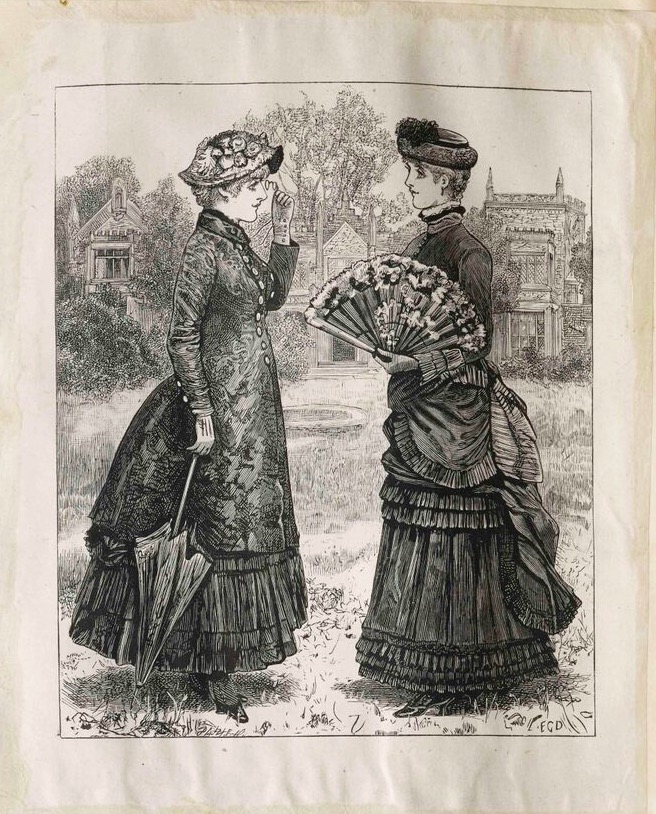
“Princess Lily and Princess Violet had just got home from strolling in the gardens. They felt nauseous from the heat. Their dresses were heavy, Lily had an umbrella to keep her cool Violet had a fan. Nothing was keeping them cool, their dresses had ten layers each. Lily said: “I think I will collapse from the heat.” Violet sighed, they knew it was only going to get hotter. How they hated their clothes. They went to go inside. As Lily opened the door Violet fell to the ground. She fainted! They didn’t know what to do. If they didn’t wear a dress, they [would] be mocked for being unladylike. It was only until Princess Lily came up with an idea. Why do they have to wear the dresses? What if their dress was only one layer, [flowing], doesn’t need gloves or hats to go or sleeves. This way it’s a dress that’s just for them. This could help. She got Princess Violet to get to work.“
Another student used a wood engraving from 1883 which shows a woman seated beside an older man as inspiration for a poem about a woman without financial power, pressurised into marriage.
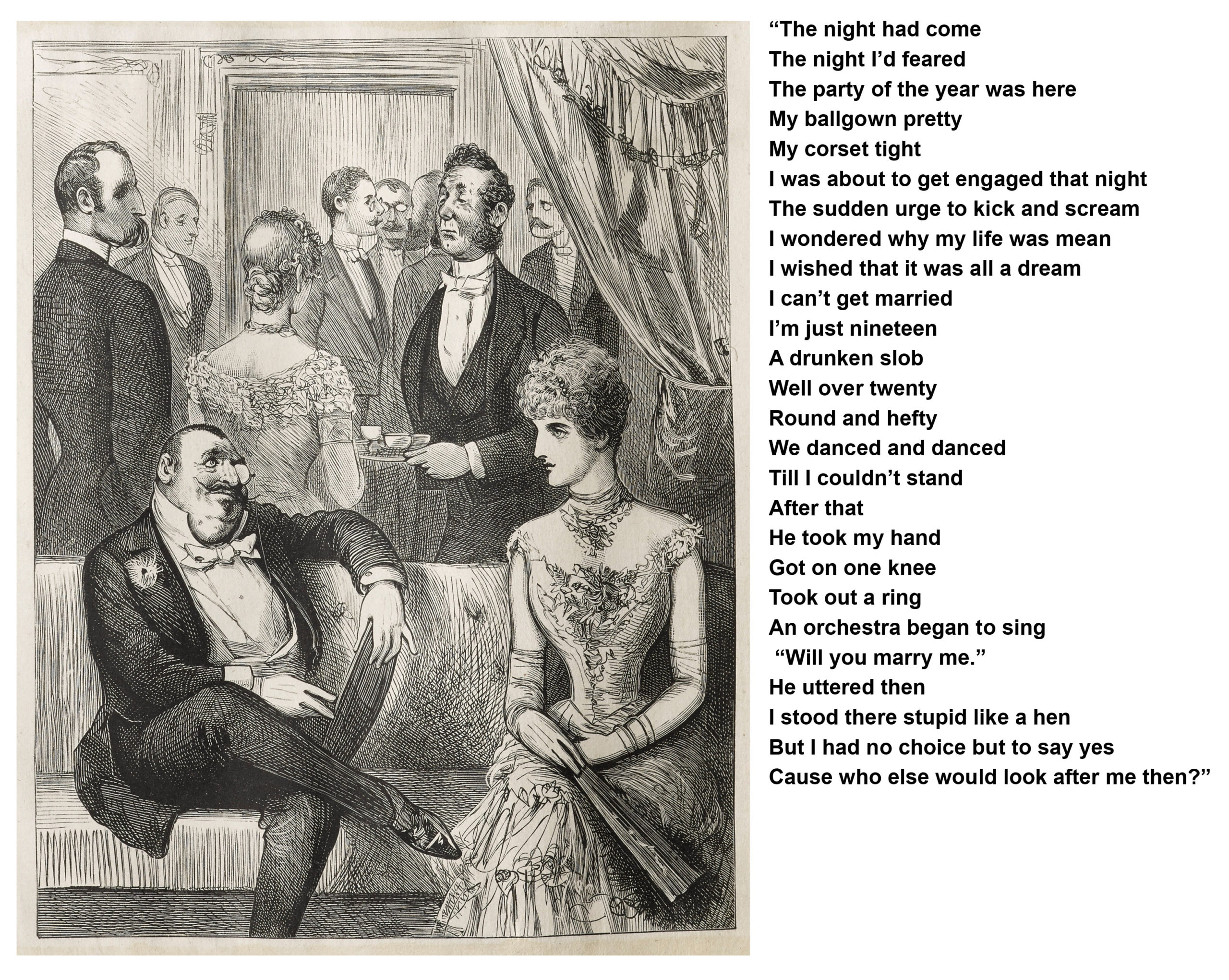
We do not know the original context of this print. Despite its narrative possibilities, it does not appear to belong to a series of illustrations. In fact it is placed in the Dalziel Archive alongside a contemporary comic illustration after J G Thompson that satirizes the fashions of high collar and corset, underlining the relationships between fashion plates, illustration and caricature.
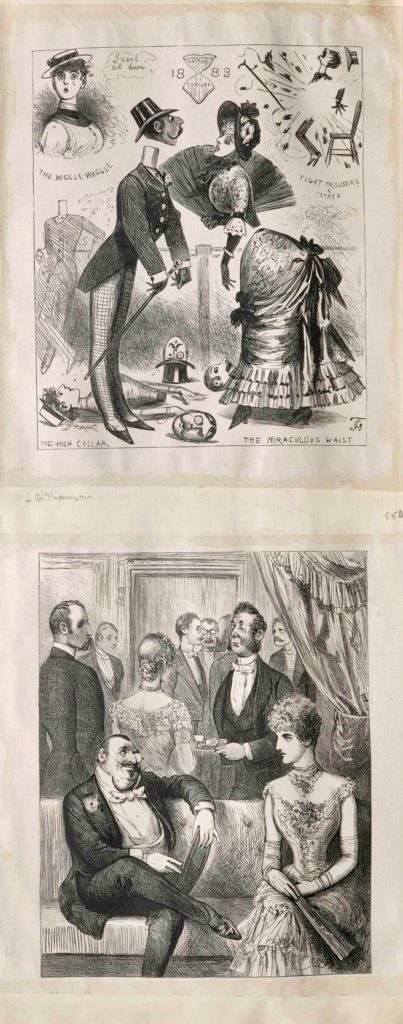
Through creative writing, students found that it was possible to project emotions and personal stories on to the stereotyped images of women in advertising and fashion plates. The weeping woman in a fashion plate which shows opera dress from Ackermann’s Magazine 1813 (below), could be the subject of a student poem entitled Angels:
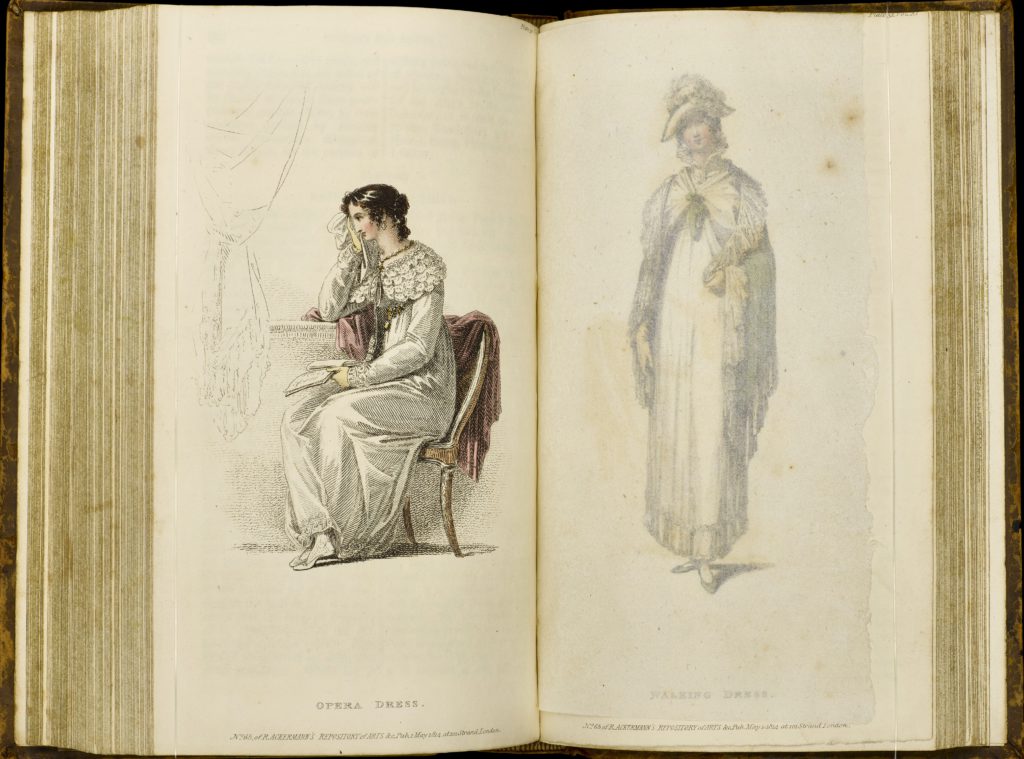
“Her eyes look down on to her daughter below
A small tear starts to roll down her cheek
She starts to write a letter
When all of a sudden
Her angels swoop in to
Comfort her that they’ll meet again
She buries
her head in her hands and starts sobbing.”
Student contributors: Alicia, Alisha, Cerys, Gordon, Jake, Lillian, Lucie-Lee, Nianna, Reuben, Robert, Rose, Sam, Sonny, Tamia, Thai.
